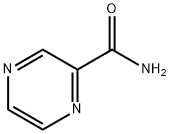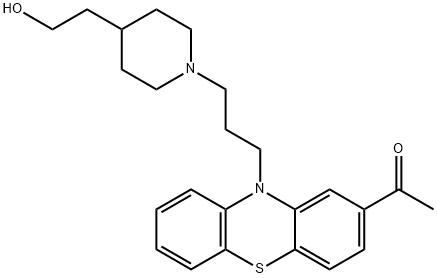2-Acetyl-3-methylpyrazine
- CAS NO.:23787-80-6
- Empirical Formula: C7H8N2O
- Molecular Weight: 136.15
- MDL number: MFCD00014612
- EINECS: 245-889-8
- SAFETY DATA SHEET (SDS)
- Update Date: 2024-12-18 14:15:32

What is 2-Acetyl-3-methylpyrazine?
Chemical properties
CLEAR SLIGHTLY YELLOW LIQUID
Chemical properties
2-Acetyl-3-methylpyrazine has a roasted, nutty, grain-roasted potato odor. It is one of the most important pyrazines for hazelnut or filbert nut flavors. The flavor is less burnt than most of the pyrazines
Occurrence
Reported present in cocoa, coffee, meat, clams, scallops, pork (cured, fried) and French fries.
Definition
ChEBI: 2-Acetyl-3-methylpyrazine is an aromatic ketone.
Aroma threshold values
Detection 0.02 (water)
Properties of 2-Acetyl-3-methylpyrazine
| Boiling point: | 90 °C20 mm Hg(lit.) |
| Density | 1.114 g/mL at 25 °C(lit.) |
| FEMA | 3964 | 2-ACETYL-3-METHYLPYRAZINE |
| refractive index | n |
| Flash point: | 176 °F |
| storage temp. | Keep in dark place,Inert atmosphere,2-8°C |
| form | clear liquid |
| pka | 0.56±0.10(Predicted) |
| color | Light yellow to Yellow to Orange |
| Specific Gravity | 1.1100 |
| Odor | at 0.10 % in dipropylene glycol. nutty nut flesh roasted hazelnut toasted grain corn chip vegetable nut skin caramellic |
| Sensitive | Light Sensitive |
| JECFA Number | 950 |
| BRN | 742438 |
| CAS DataBase Reference | 23787-80-6(CAS DataBase Reference) |
| NIST Chemistry Reference | 2-Acetyl-3-methylpyrazine(23787-80-6) |
| EPA Substance Registry System | Ethanone, 1-(3-methylpyrazinyl)- (23787-80-6) |
Safety information for 2-Acetyl-3-methylpyrazine
| Signal word | Warning |
| Pictogram(s) |
 Exclamation Mark Irritant GHS07 |
| GHS Hazard Statements |
H315:Skin corrosion/irritation H319:Serious eye damage/eye irritation H335:Specific target organ toxicity, single exposure;Respiratory tract irritation |
| Precautionary Statement Codes |
P261:Avoid breathing dust/fume/gas/mist/vapours/spray. P264:Wash hands thoroughly after handling. P264:Wash skin thouroughly after handling. P271:Use only outdoors or in a well-ventilated area. P280:Wear protective gloves/protective clothing/eye protection/face protection. P302+P352:IF ON SKIN: wash with plenty of soap and water. P305+P351+P338:IF IN EYES: Rinse cautiously with water for several minutes. Remove contact lenses, if present and easy to do. Continuerinsing. |
Computed Descriptors for 2-Acetyl-3-methylpyrazine
2-Acetyl-3-methylpyrazine manufacturer
Neugen Labs
1Y
Phone:+918133254502
Whatsapp: +91-8133254502
product: 23787-80-6 2-Acetyl-3-methylpyrazine 98%
New Products
(S)-3-Aminobutanenitrile hydrochloride 4-Methylphenylacetic acid N-Boc-D-alaninol N-BOC-D/L-ALANINOL Tert-butyl bis(2-chloroethyl)carbamate 3-Morpholino-1-(4-nitrophenyl)-5,6-dihydropyridin- 2(1H)-one Furan-2,5-Dicarboxylic Acid Tropic acid 1-Bromo-3,5-Di-Tert-Butylbenzene S-2-CHLORO PROPIONIC ACID ETHYL ISOCYANOACETATE 2-Bromo-1,3-Bis(Dimethylamino)Trimethinium Hexafluorophosphate 4-IODO BENZOIC ACID 3-NITRO-2-METHYL ANILINE 1-(2,4-DICHLOROPHENYL) ETHANAMINE (2-Hydroxyphenyl)acetonitrile 4-Bromopyrazole 2-(Cyanocyclohexyl)acetic acid 4-methoxy-3,5-dinitropyridine 1-(4-(aminomethyl)benzyl)urea hydrochloride 2-aminopropyl benzoate hydrochloride diethyl 2-(2-((tertbutoxycarbonyl)amino) ethyl)malonate tert-butyl 4- (ureidomethyl)benzylcarbamate Ethyl-2-chloro((4-methoxyphenyl)hydrazono)acetateRelated products of tetrahydrofuran








You may like
-
 23787-80-6 2-Acetyl-3-methylpyrazine 98%View Details
23787-80-6 2-Acetyl-3-methylpyrazine 98%View Details
23787-80-6 -
 2-Acetyl-3-methylpyrazine CAS 23787-80-6View Details
2-Acetyl-3-methylpyrazine CAS 23787-80-6View Details
23787-80-6 -
 2 Acetyl 3 Methylpyrazine CASView Details
2 Acetyl 3 Methylpyrazine CASView Details -
 2-Acetyl-3-methylpyrazine CAS 23787-80-6View Details
2-Acetyl-3-methylpyrazine CAS 23787-80-6View Details
23787-80-6 -
 1975-50-4 98%View Details
1975-50-4 98%View Details
1975-50-4 -
 2-HYDROXY BENZYL ALCOHOL 98%View Details
2-HYDROXY BENZYL ALCOHOL 98%View Details
90-01-7 -
 14714-50-2 (2-Hydroxyphenyl)acetonitrile 98+View Details
14714-50-2 (2-Hydroxyphenyl)acetonitrile 98+View Details
14714-50-2 -
 118753-70-1 98+View Details
118753-70-1 98+View Details
118753-70-1
Statement: All products displayed on this website are only used for non medical purposes such as industrial applications or scientific research, and cannot be used for clinical diagnosis or treatment of humans or animals. They are not medicinal or edible.